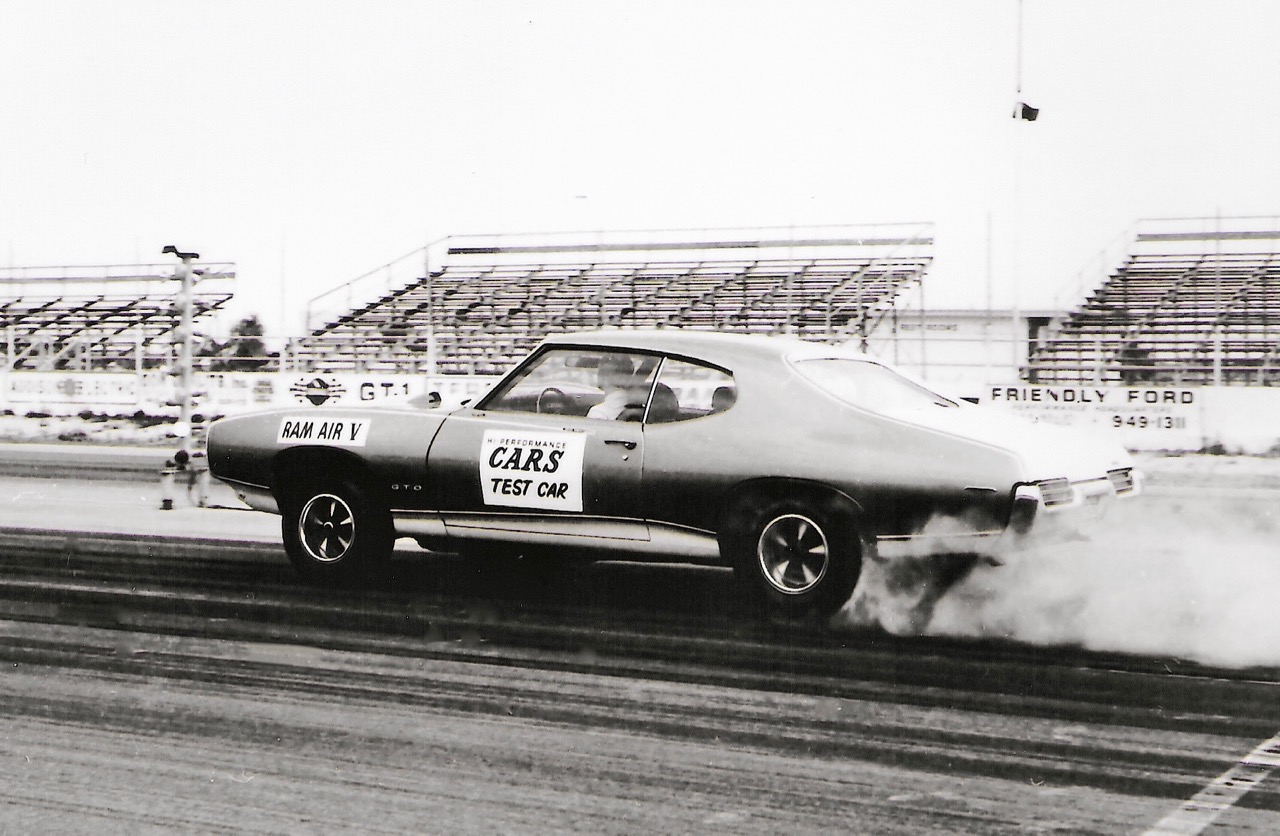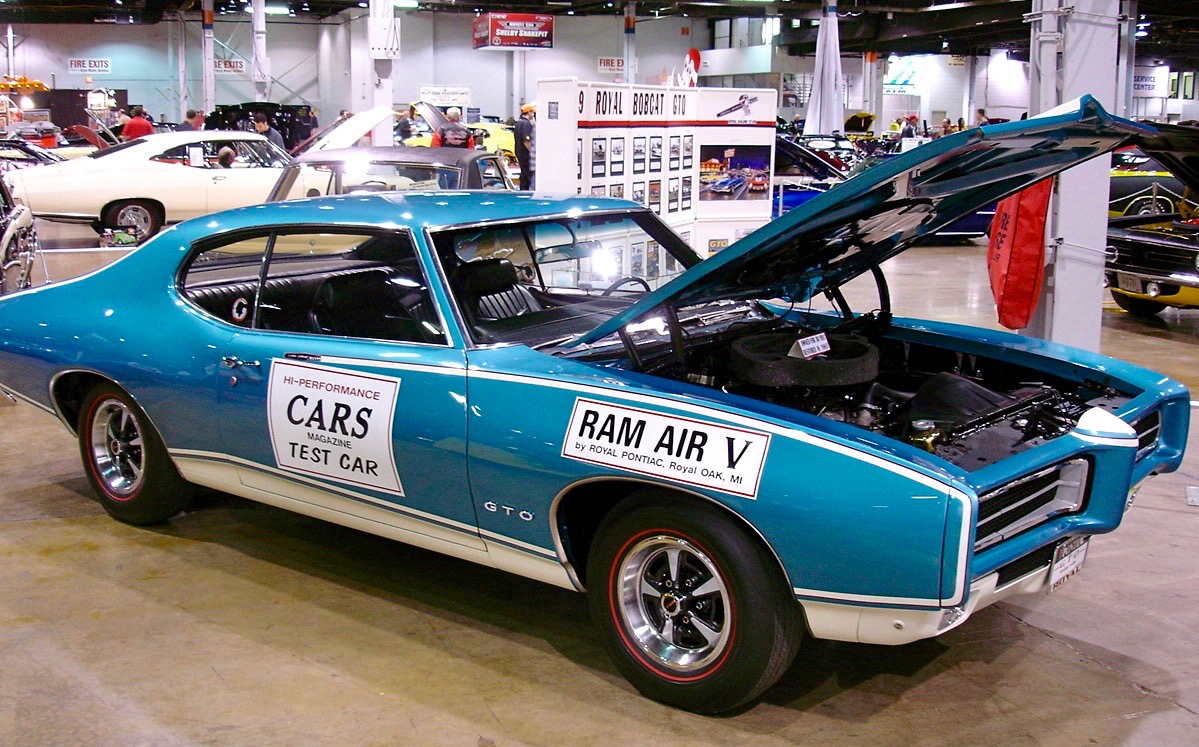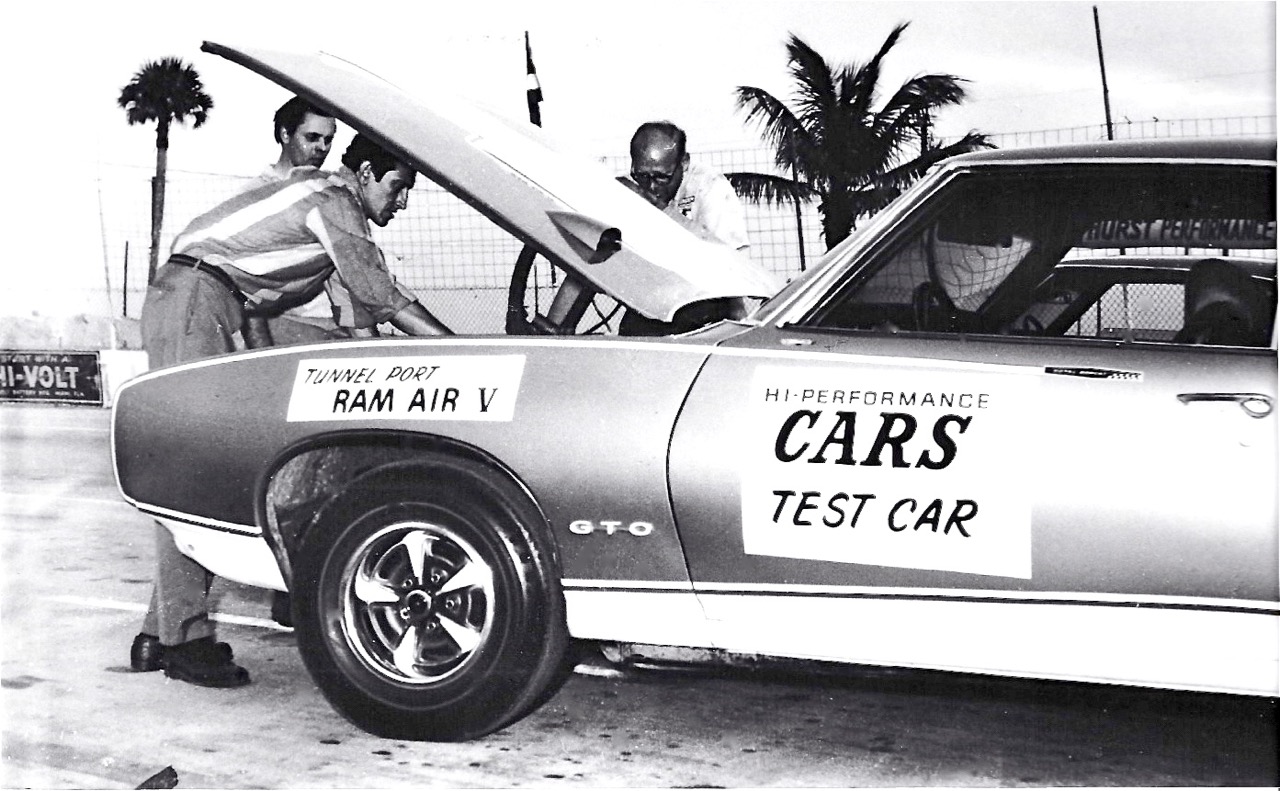Like Chevrolet’s ZL1 Corvette and Buick’s Stage II Gran Sports, Pontiac’s Tunnel Port Ram Air V has been the subject of urban legends for decades. It’s all about myth & magic.

 According to Tom Nell, a Special Projects Engineer at Pontiac in 1971, “Pontiac’s Ram Air V or Mark V was the first Pontiac engine since the 1963 Super-Duty 421 to be developed around the concept of performance and durability, outside the realm of normal usage.”
According to Tom Nell, a Special Projects Engineer at Pontiac in 1971, “Pontiac’s Ram Air V or Mark V was the first Pontiac engine since the 1963 Super-Duty 421 to be developed around the concept of performance and durability, outside the realm of normal usage.”
Many of the same high-performance engineers responsible for the 1969 ½ Ram Air IV 400 were also involved in the design and development of the Ram Air V. They took a page from Ford’s 427 drag and NASCAR playbook, resulting in all-new maximum flow Tunnel-Port heads with huge round intake ports. The Ram Air V lineup included 303, 366 and 400-inch iterations for SCCA, NASCAR and street and drag racing, respectively. At the time, there was also talk about a possible 428 version. But unlike the Ram Air IV, the Ram Air V never became a Regular Production Option.
I expressed an interest in testing a ’69 ½ GTO after learning that Jim Wangers had convinced Pontiac to install a pre-production 366-horsepower Ram Air IV engine in a new GTO. This engine had new heads, 1.65-to-1 rocker arms, aluminum intake manifold and high-lift cam. Jim let me know that Pontiac was also supplying a prototype Ram Air V 400 engine for comparison testing. The good news got even better. Restored GTO, below, is owned by Rita and Bill Schultz, photographed at MCACN 2010 where I, above, saw it for first time since 1969.
 The ’69 GTO was delivered to Royal Pontiac where Milt Schornack and Dave Warren converted it to Bobcat specs and added headers and a Schiefer clutch. After some local racing, the GTO was shipped to Florida for testing at Miami Dragway. With open headers and 8.50×14 cheater slicks, it ran a best time of 109.52 mph in 12.62-seconds. With closed pipes and street tires, it ran 108.42 mph in 13.42 seconds. Impressive indeed!
The ’69 GTO was delivered to Royal Pontiac where Milt Schornack and Dave Warren converted it to Bobcat specs and added headers and a Schiefer clutch. After some local racing, the GTO was shipped to Florida for testing at Miami Dragway. With open headers and 8.50×14 cheater slicks, it ran a best time of 109.52 mph in 12.62-seconds. With closed pipes and street tires, it ran 108.42 mph in 13.42 seconds. Impressive indeed!
 Pontiac’s 400-inch Ram Air V engine featured a reinforced four-bolt-main block, forged steel crank and rods, forged 10.75 pistons, solid-lifter cam, big-valve heads, aluminum intake manifold with a Holley 800-cfm four-barrel and tuned cast-iron exhaust manifolds. Pontiac planned on rating the engine at 375 horsepower, even though dyno tests were closer to 500!
Pontiac’s 400-inch Ram Air V engine featured a reinforced four-bolt-main block, forged steel crank and rods, forged 10.75 pistons, solid-lifter cam, big-valve heads, aluminum intake manifold with a Holley 800-cfm four-barrel and tuned cast-iron exhaust manifolds. Pontiac planned on rating the engine at 375 horsepower, even though dyno tests were closer to 500!
After testing the Ram Air IV GTO, the Royal crew swapped engines. After a few burnouts and warm-up passes, it was obvious that the RA V produced considerably more horsepower, as it easily overwhelmed the slicks. On its first full-throttle run, driver John Kosmala backed off after hearing a knocking sound. The engine was a well-worn prototype with many hours of dyno testing under load and it experienced a bearing failure. That was the end of testing, but not the end of the Ram Air V GTO. In 1970, the rebuilt original RA V engine was re-installed by Royal and the GTO clocked consistent 11.70s at Detroit Dragway.
 The Ram Air V program was put on the back burner and well into the 1970s, complete engines and components were still available. It has been estimated that a couple of dozen RA V 303 engines and a considerably larger number of 400s were assembled. While some Pontiac dealers did install RA V engines in new GTOs and Firebirds, there are no records of assembly line installations. Some are still running today in sedan racing and on drag strips. The magic has survived!
The Ram Air V program was put on the back burner and well into the 1970s, complete engines and components were still available. It has been estimated that a couple of dozen RA V 303 engines and a considerably larger number of 400s were assembled. While some Pontiac dealers did install RA V engines in new GTOs and Firebirds, there are no records of assembly line installations. Some are still running today in sedan racing and on drag strips. The magic has survived!
 The Ram Air V GTO story originally appeared in DAY ONE, An Automotive Journalist’s Muscle-Car Memoir, which covers 1962-1974 high-performance cars as they were when brand new. Check it out at https://www.amazon.com/Day-One-Automotive-Journalists-Muscle-Car/dp/0760352364/ref=sr_1_1?s=books&ie=UTF8&qid=1493561421&sr=1-1&keywords=Day+One+by+Martyn+L.+Schorr
The Ram Air V GTO story originally appeared in DAY ONE, An Automotive Journalist’s Muscle-Car Memoir, which covers 1962-1974 high-performance cars as they were when brand new. Check it out at https://www.amazon.com/Day-One-Automotive-Journalists-Muscle-Car/dp/0760352364/ref=sr_1_1?s=books&ie=UTF8&qid=1493561421&sr=1-1&keywords=Day+One+by+Martyn+L.+Schorr
